Victorian Enamel "Sandal of Hermes" Charm
Victorian Enamel "Sandal of Hermes" Charm
$1,150.00
Description
DATE: Victorian, c.1900
Hermes, messenger of the Gods and protector of mortal travellers, thieves, merchants, athletes, and orators. Indeed his Roman name, Mercury, is the root of our words merchant, merchandise, and commerce. The earliest records of his worship suggests origins as a cthonic deity, strongly associated with the the earth and the underworld; he guided the souls of the deceased as the crossed into the afterlife.
Hermes is probably my favourite character from the Greek pantheon, charming, cheeky, and cunning in equal measure. The son of Zeus and Maia the Pleiad, he acted as the emissary and herald of the Olympian Gods, aided by his winged sandals he was able to travel quickly between the mortal and divine world. He was known among the ancients as both a protector and "the divine trickster", referred to in the Illiad (where he allied with the Greeks) as "excellent in all the tricks", a "guide and guardian", and also "the bringer of good luck". The earliest known reference to Hermes is Homeric Hymn 4, which describes his birth, the theft of Apollo's beloved cattle to the delight of Zeus, and the creation of the first ever lyre from a tortoise - all before sunset on the day of his birth. An expert from HH4:
"Muse, sing of Hermes, the son of Zeus and Maia, lord of Cyllene and Arcadia rich in flocks, the luck-bringing messenger of the immortals whom Maia bare, the rich-tressed nymph, when she was joined in love with Zeus... and when the purpose of great Zeus was fulfilled, and the tenth moon with her was fixed in heaven, she was delivered and a notable thing was come to pass. For then she bare a son, of many shifts, blandly cunning, a robber, a cattle driver, a bringer of dreams, a watcher by night, a thief at the gates, one who was soon to show forth wonderful deeds among the deathless gods. Born with the dawning, at mid-day he played on the lyre, and in the evening he stole the cattle of far-shooting Apollo on the fourth day of the month; for on that day queenly Maia bare him."
This charm depicts Hermes's winged sandal. It dates from the late Victorian period, crafted in 9k gold and finished in vitreous red and white enamel. Handmade in England circa 1900.
MEASUREMENTS
1.7 x 1.0cm
WEIGHT
1.5g
MARKS
No marks present, tests as 9k gold
CONDITION
Excellent
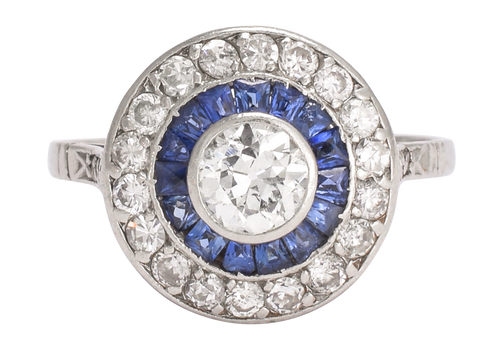
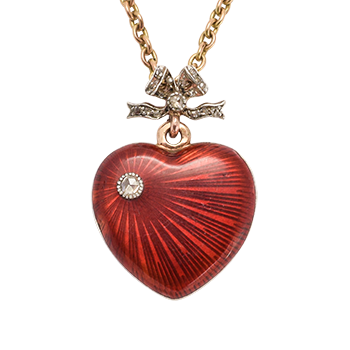
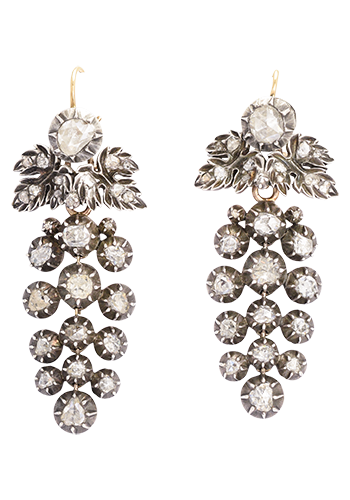
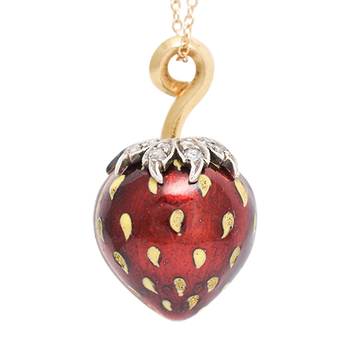

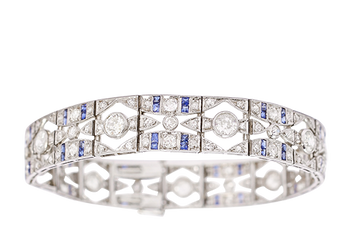
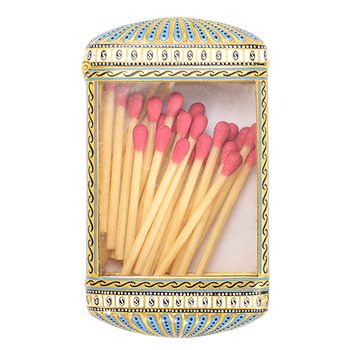
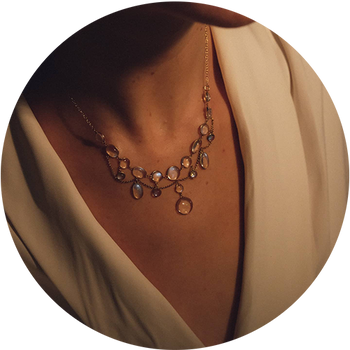
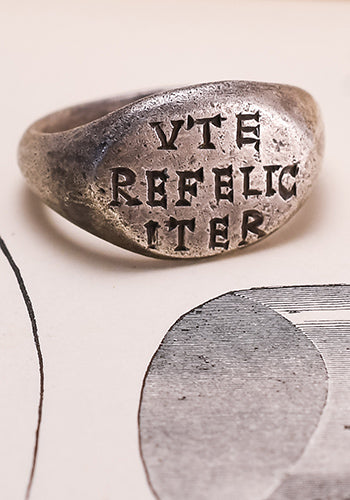
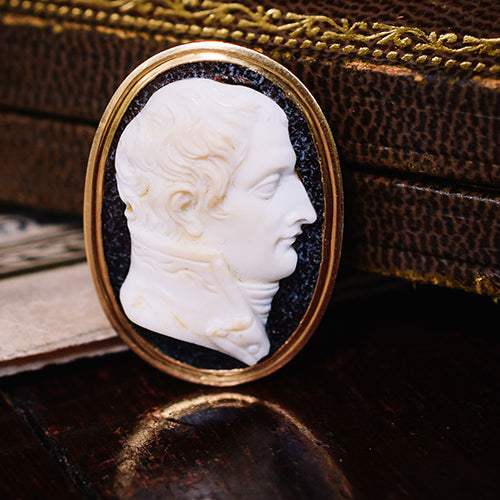
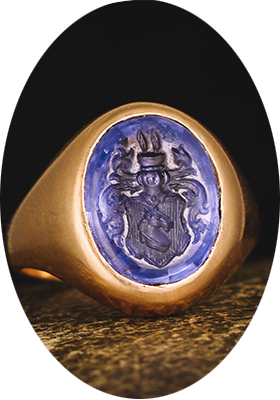
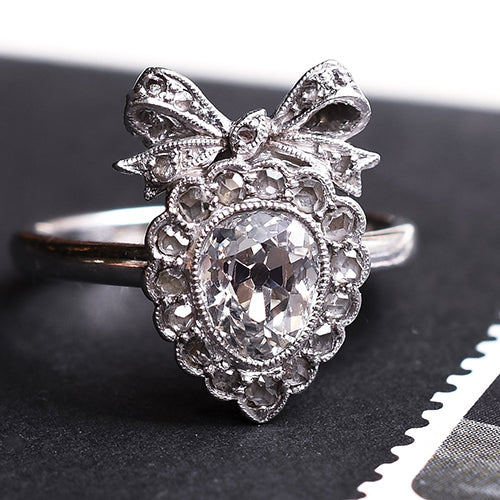
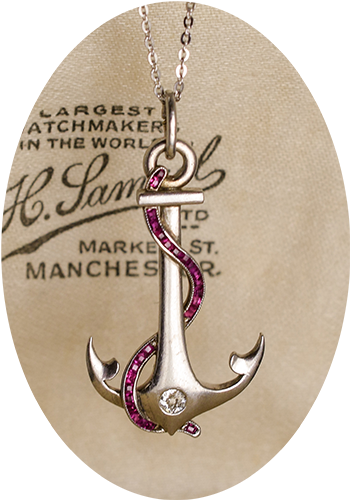
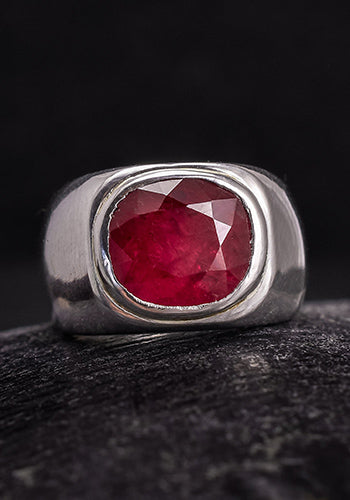
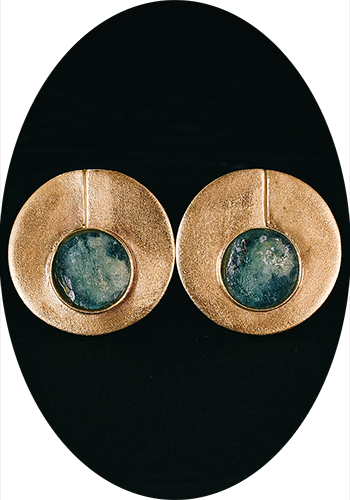
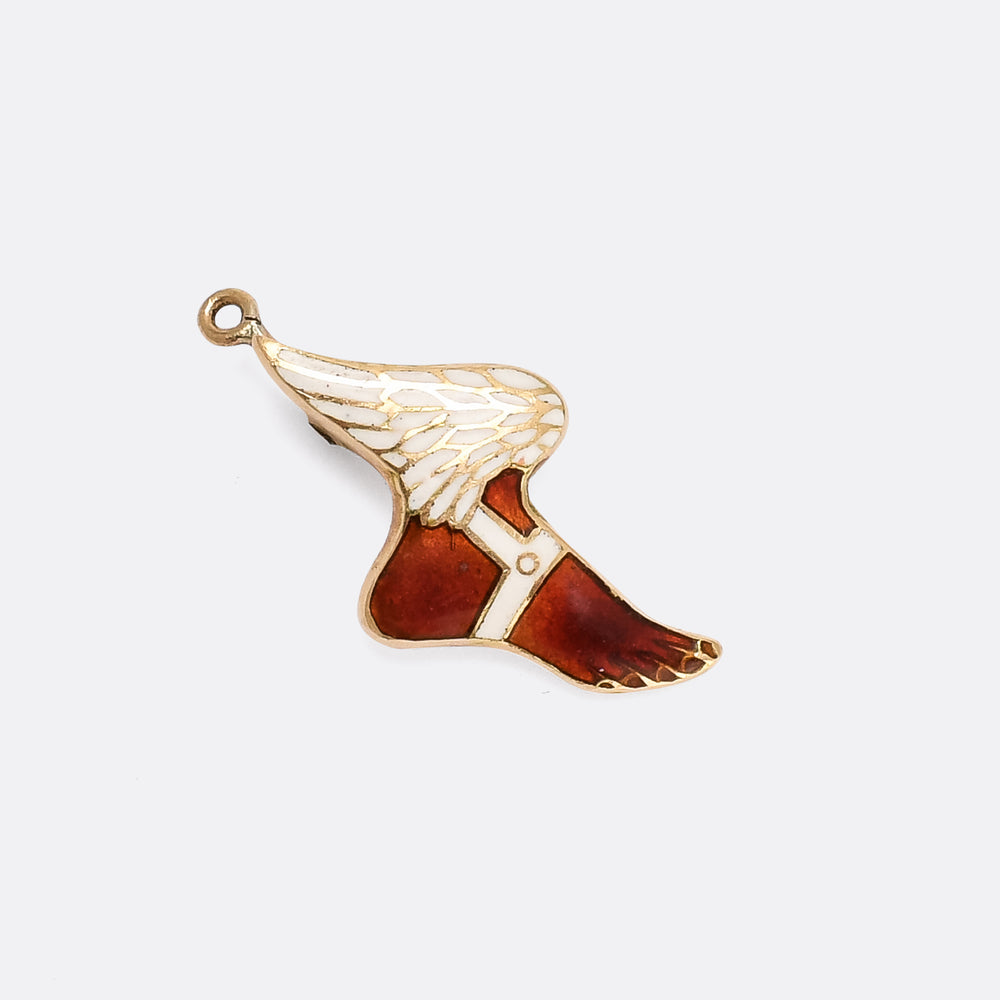
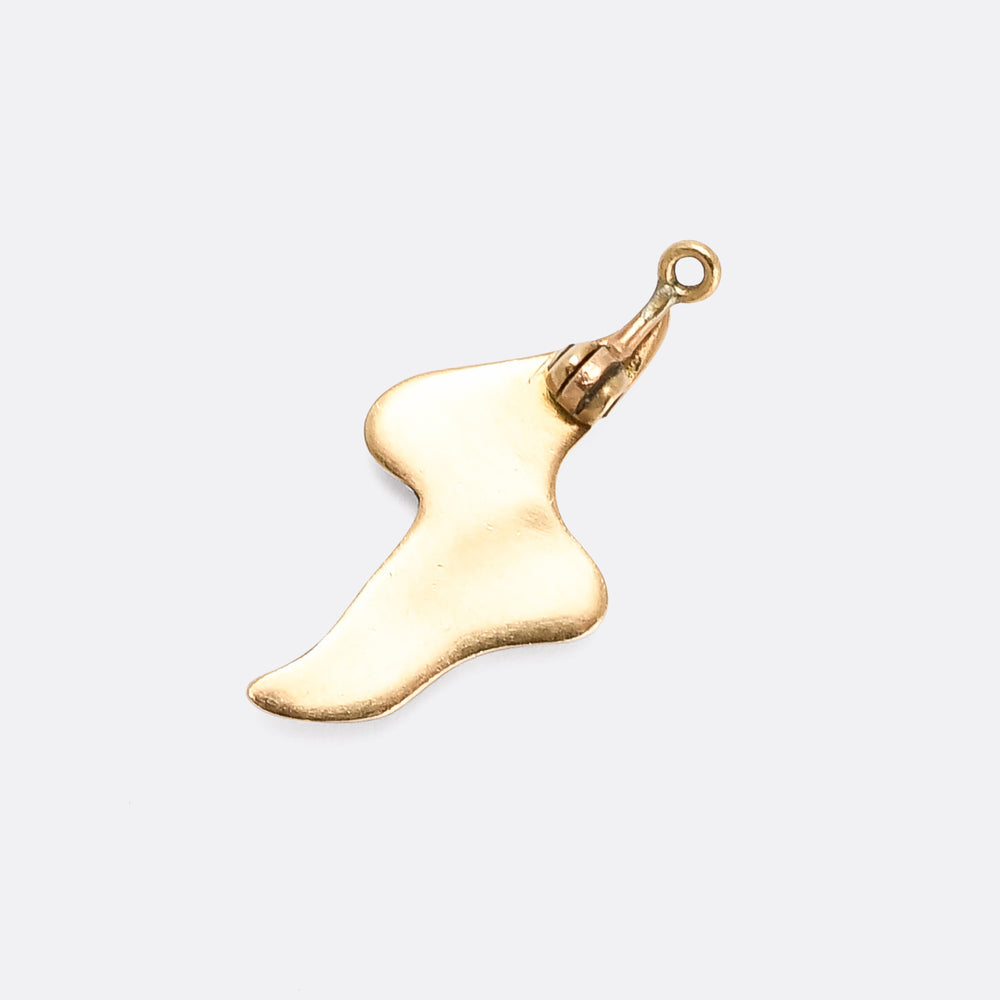
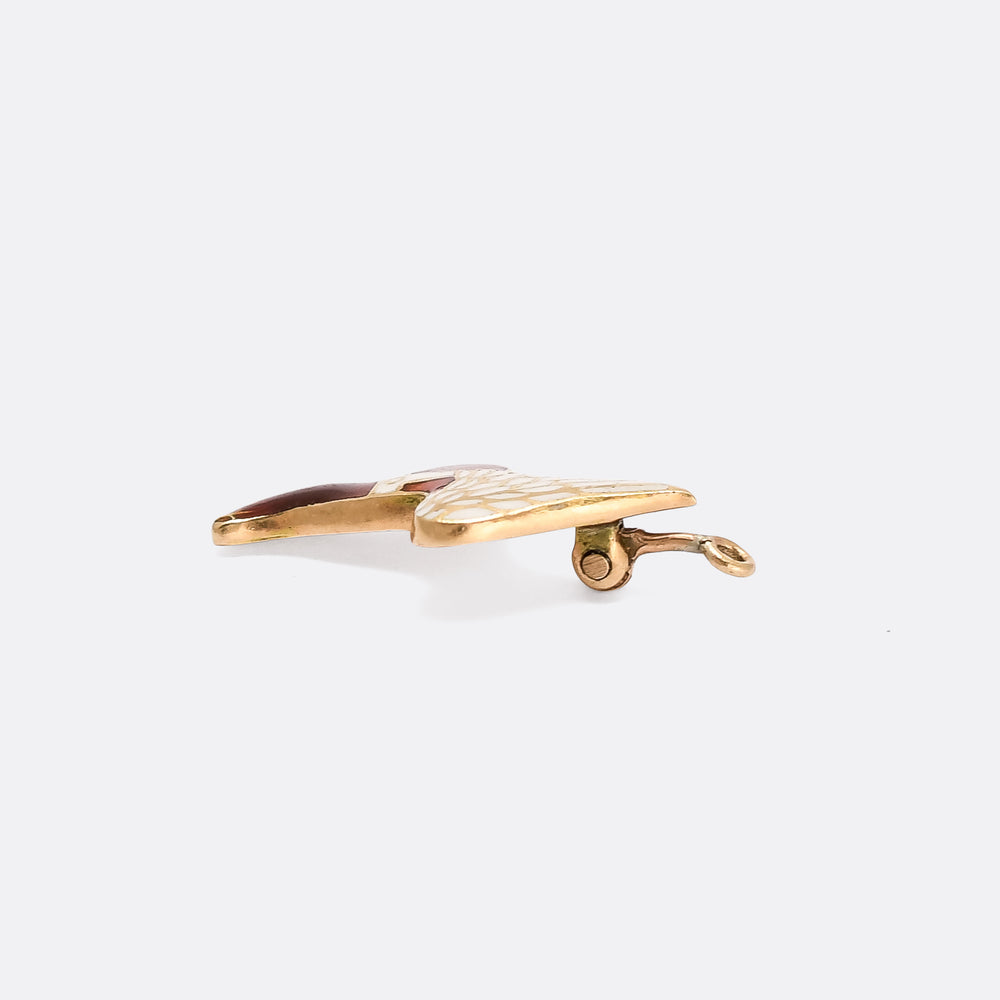
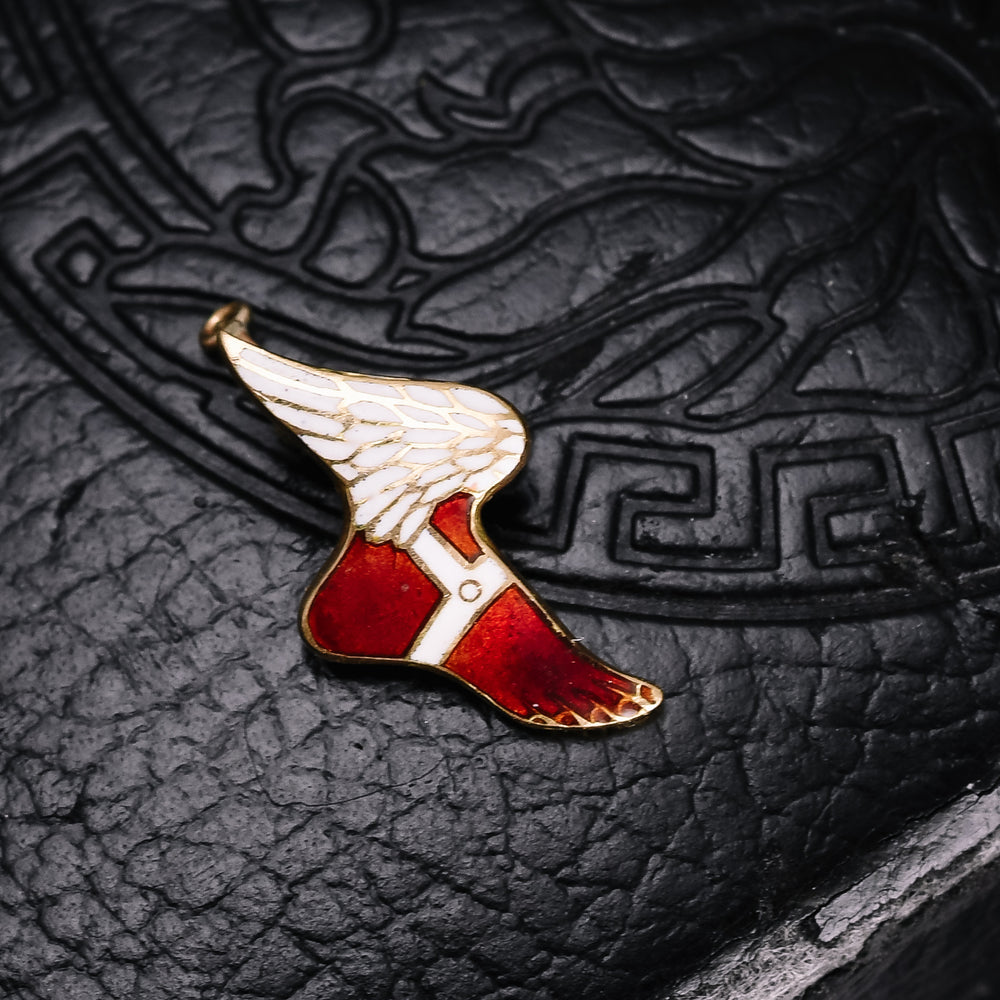
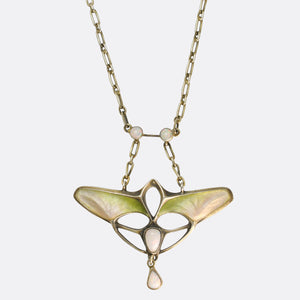
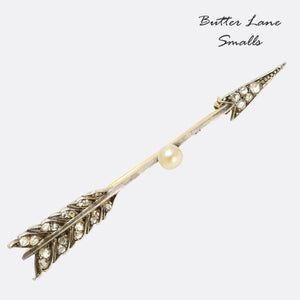
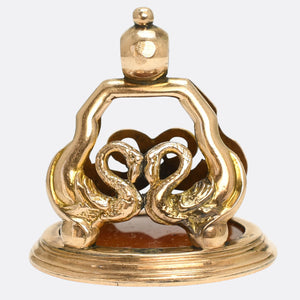
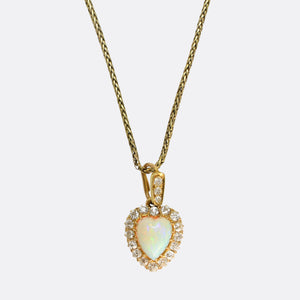
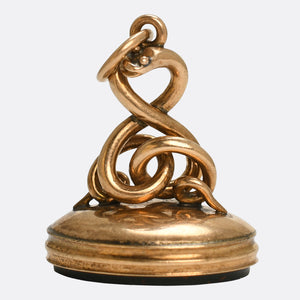
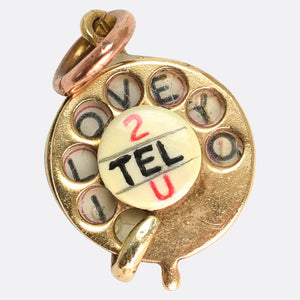
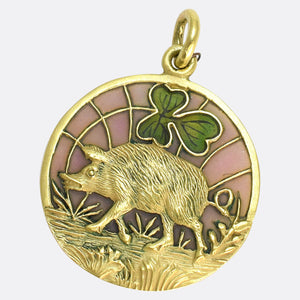
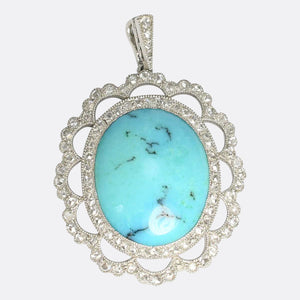
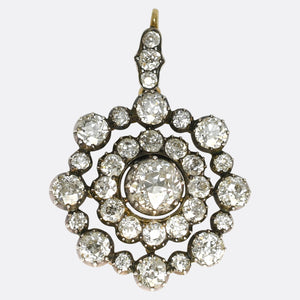
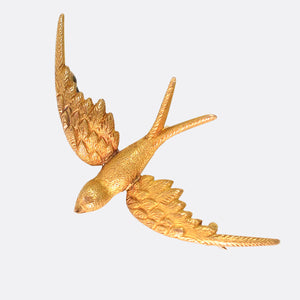
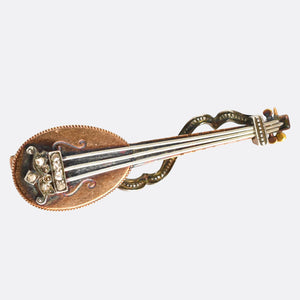
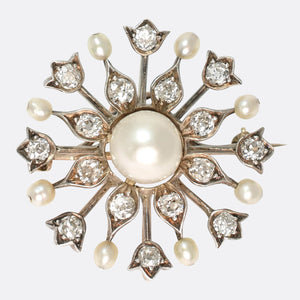
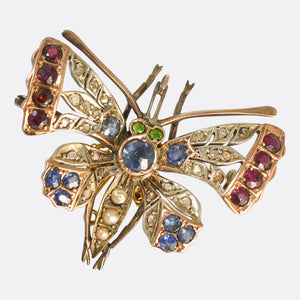
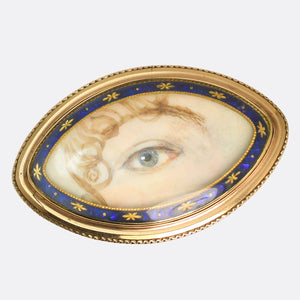
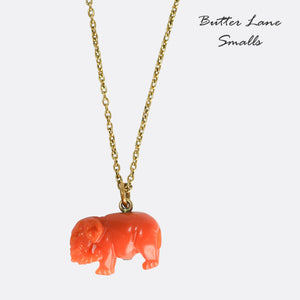
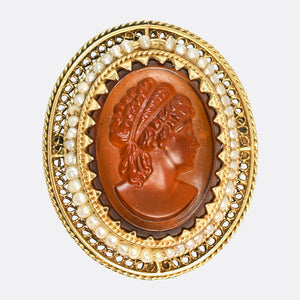
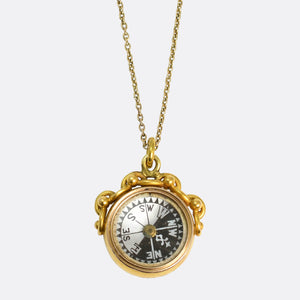
Follow Us
Dealing Podcast blog instagram TikTok facebook